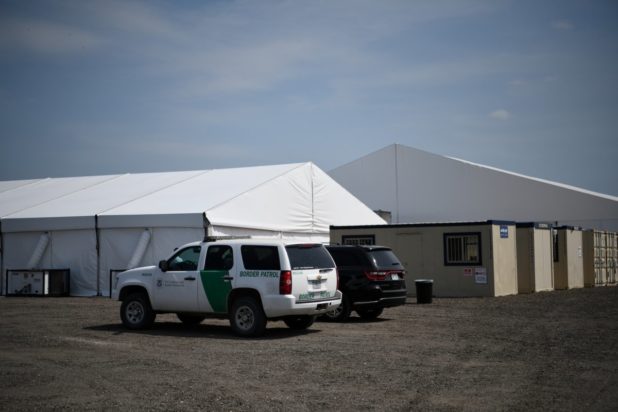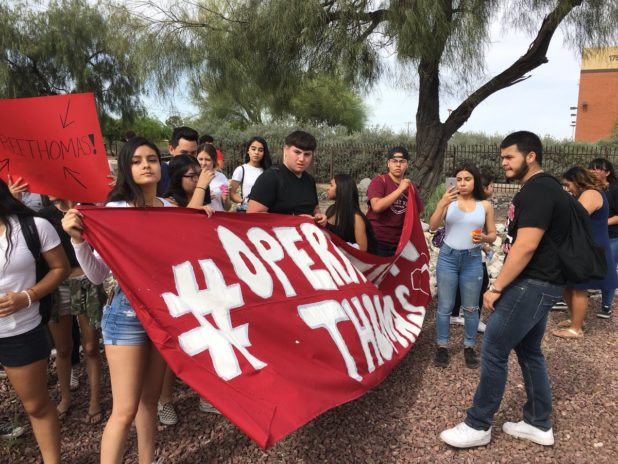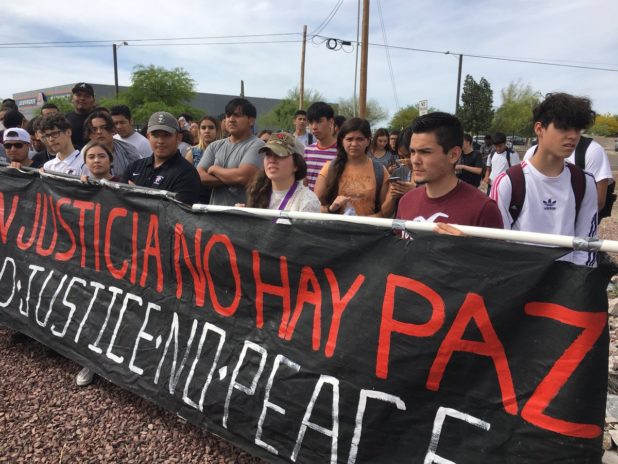Pomidor Quixote
Daily Stormer
May 8, 2019
The useless tent cities are now officially proven to be useless.
Less than a week after opening a 40,000-square-foot tent complex to temporarily house migrants crossing the lower Rio Grande, federal immigration authorities say the pace of apprehensions continues to overwhelm shelter capacity.
The U.S. Border Patrol said Tuesday that agents from Brownsville to Roma apprehended more than 2,400 undocumented immigrants on Saturday. Most of them were part of family units and unaccompanied children.
To put this in context: the cost of both tent complexes mentioned was $36.9 million, their combined capacity is only 1000 goblins and these creatures are coming by the thousands every day.
Do you see how much of a pointless move trying to accommodate the invasion is?
The only solution is to stop the invasion.
During the past week more than 10,000 migrants were apprehended, “making it one of the highest weekly total ever experienced in this sector,” the Border Patrol said in a news release.
The goblin tent cities are intended to rotate their goblin garrison every 48 hours, which means that both of these tent complexes are only able to process 1,000 goblins every two days.
Are we supposed to keep wasting millions and millions and millions and millions in additional tent cities until there’s either no more money left or the world’s entire goblin population has successfully moved into America?
I wouldn’t be surprised if many people answered “yes.” Some of them are really fond of the little green ones.
More than 120 students in Tucson, Arizona, walked out of class on Monday to protest their classmate’s detainment by U.S. Customs and Border Protection just weeks ahead of his graduation.
Pima County Sheriff’s deputies pulled over Thomas Torres Maytorena, an 18-year-old senior at Desert View High School, on Thursday night after determining the vehicle he was driving had an expired registration and a mandatory insurance suspension.
Deputies asked Torres Maytorena for identification, but he was unable to produce a driver’s license, according to a sheriff’s office statement. After the teen said he was an undocumented immigrant, the deputies contacted Border Patrol, which took him into custody for an overstayed visa.
Torres Maytorena’s supporters say the sheriff’s department’s collaboration with immigration authorities is unethical and dangerous. They’re calling on law enforcement to release the student, who has been in the U.S. since he was a toddler and was set to graduate on May 22.
Yes, the law-enforcing sheriff department collaborating with other law enforcement agencies is unethical and dangerous.
Dozens of students marched roughly four miles from the high school Monday morning to the Pima County Sheriff’s Department, where they chanted “Free Thomas Now!” and held up banners with the phrase “Without Justice, There Is No Peace” written on them.
Lorena Rodriguez, who created a GoFundMe campaign to help Torres Maytorena cover his legal expenses, told The Associated Press that the teen had been living with her family in Tucson for several years.
“People like Thomas are needed in this country,” Rodriguez wrote on the fundraising page. “He’s a hardworking young man willing to better his future.”
Someone should investigate that “Lorena Rodriguez” legummanoid and check its immigration status. Is that creature implying there are no hardworking Americans willing to improve their future? If not, why would we need the foreign version instead of the American version?
Why are these creatures even in our high schools?
Local high school students staged a walkout Monday morning after a football player & student was taken into Border Patrol custody.
According to a news release, Thomas Torres, a senior at Desert View High School was taken into custody after a traffic stop by Pima County Sheriff. pic.twitter.com/xwIsk2Mitd— AndrewKVOA (@AndrewKVOA) May 6, 2019
Just look at these monsters.
Look at their faces. Why are these sewer dwellers in America talking about the American dream?
Who allowed this to happen?
Is this what high schools students in America are supposed to look like?
The browning is happening. You can see it.
Is there any other way to deal with it than to keep creating tent cities? Some engineers appear to have a slightly better approach to the problem.
The nearly 2,000-mile border that separates the U.S. and Mexico is not an easily navigable environment. It meanders across deserts and canyons, riverbeds and wetlands. It’s dotted unevenly with fences, walls, and checkpoints built to control immigration between the countries.
President Donald Trump, a year and a half ago, proposed putting solar panels here, on the border wall that had been a rallying cry of his campaign. “Look, there’s no better place for solar than the Mexico border—the southern border,” he said at the time.
It’s not infeasible, technically. The notion of a solar-paneled border wall might have seemed underdeveloped, but a group of scientists based out of Purdue University and other large research institutions are now proposing a plan that, they say, would unite the Republican Party’s call for more border security with the Democratic Party’s calls for a Green New Deal.
Instead of a concrete barrier, these engineers and scientists envision a massive energy infrastructure project at the United States border, in one of the sunniest regions of the southern U.S. With solar panels, wind turbines, water desalination facilities, and pipelines for natural gas, this extensive, snaking complex would theoretically produce clean energy for both countries, spurring economic growth and development in the region.
The infrastructure and accompanying facilities would be placed in between and around existing sections of border fences and walls. Their paper suggests placing wind turbines along high-potential wind-energy sites on the Texas Gulf Coast and in Baja, California. That energy could then be used to desalinate water in the region, which frequently faces droughts and shortages. Solar panels would dot the border in West Texas and New Mexico—an area with the best solar-energy potential in the United States, but little installed capacity.
Given its size and scale, the infrastructure in this plan effectively is the barrier between the two countries. And the paper proposes that it all be accompanied by high-level security, such as drones and sensors, warning of any suspicious activity or threat to the sensitive energy and electric infrastructure—whether that’s humans attempting to cross through it, or the wildlife that inhabits both sides of the border.
Luciano Castillo, a professor at Purdue and the lead author of the paper, doesn’t see the border energy park as a way to stop immigration, which would require a much more holistic set of policies. It could, however, provide jobs and opportunities to people fleeing their home countries. “This isn’t us versus them—we want people to be able to come and work [on this] innovation,” he says. On paper, the idea might seem equal parts fantastical and unfeasible; Castillo sees the proposal as inherently optimistic. To an engineer, it looks like a chance to change the more and more polarized rhetoric around the border, and spur cooperative economic development on both sides.
Enough with the “spurring economic growth and development, we want people to be able to come and work, provide jobs and opportunities to people fleeing their home countries” bullshit and enough with the economy-worshiping.
I don’t care about the economy. I care about demographics. I care about my people.
It doesn’t matter if the economy suddenly collapses and we’re back to stone-age technology levels. As long as our people exist, we can create another civilization. We can create another economy. We can create new technology. We can do all of that and more.
We carry the most important thing inside us. It’s in our blood.
Caring about the economy instead of caring about securing the existence of the people who produced that economy is like trying to protect a couple of golden eggs while killing the goose that lays them.
There’s nothing in this fake and gay materialistic modern world that is worth more than our people.
 Daily Stormer The Most Censored Publication in History
Daily Stormer The Most Censored Publication in History










